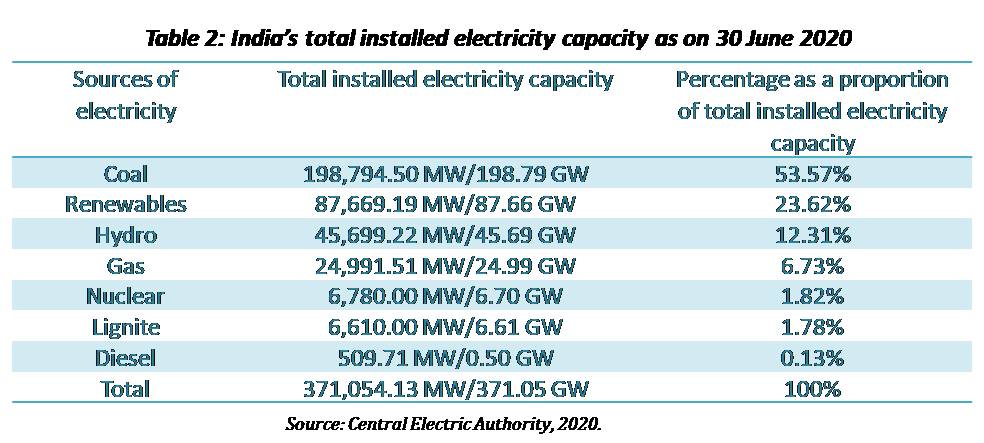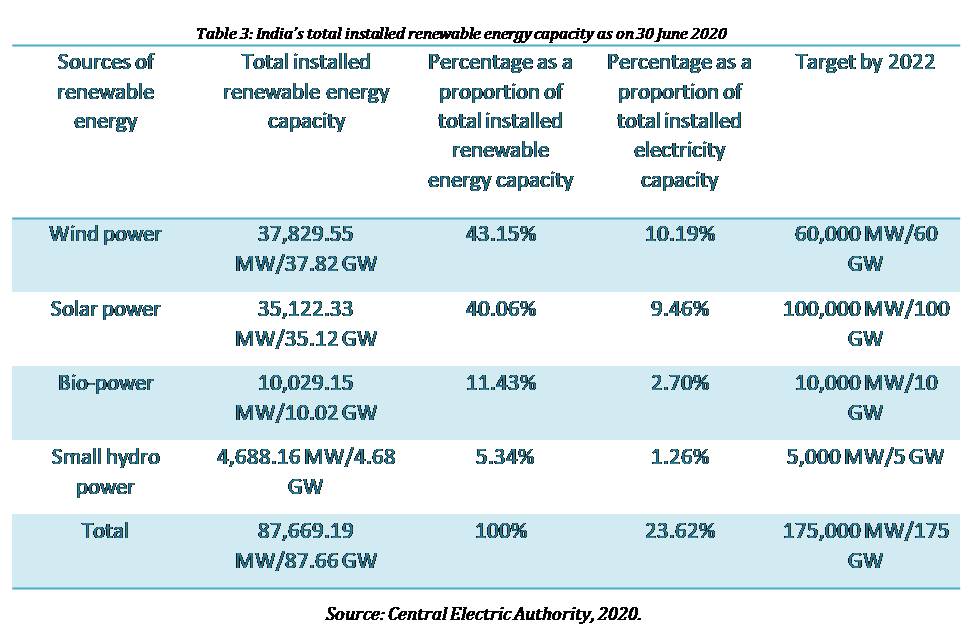Introduction
The ongoing COVID-19 pandemic is simultaneously a public health crisis and an economic crisis. On the public health front, it has resulted in 21,527,747 total confirmed cases and 772,370 deaths in 188 countries as of 16 August 2020.1 In response, countries across the world have imposed varying degrees of lockdowns to contain the spread of the pandemic and protect lives. That has resulted in an unprecedented economic shock with the International Monetary Fund (IMF) projecting a contraction of 4.9 per cent in global GDP in 2020.2 Despite these catastrophic public health and economic outcomes, the pandemic have delivered unprecedented environmental benefits due to reductions in CO2 emissions and air pollution. This article argues that the COVID-19 pandemic provides invaluable lessons for climate change responses. First, it contends that governments must act with the same urgency and immediacy on climate change as they did on the pandemic by implementing effective climate policies. Second, countries should aim for a green recovery centered on clean and renewable energy and use the rebuilding of pandemic-ravaged economies to tackle the even greater threat of climate change.
Lockdowns and its Unintended Environmental Consequences
Lockdowns in the context of the COVID-19 pandemic refers to the imposition of emergency measures aimed at limiting social contact to contain the pandemic’s spread. These measures include travel restrictions; closures of public places, schools, workplaces, and businesses; public curfews; stay-at-home orders etc. In the absence of safe and effective vaccine, lockdowns remained the only available, accessible and potentially effective tools. While the efficacy of lockdowns in containing the spread of COVID-19 is yet to be fully ascertained, it did deliver unprecedented environmental benefits. The decline in human and economic activity during lockdowns led to reductions in CO2 emissions and air pollution. According to the first definitive study of global CO2 output in 2020, daily CO2 emissions in early April, when lockdowns have become widespread, plunged 17 per cent compared with 2019 levels.3
Emissions from aviation showed the most dramatic decline, of about 60 per cent, followed by surface transport at 36 per cent and power generation and industry at 86 per cent. On the whole, CO2 emission was projected to decline by 4 per cent by the end of the year. This is unprecedented because emissions have been rising by more than 1 per cent annually. Despite this, its impact on global climate is likely to be negligible because stocks of CO2 in the atmosphere will continue to rise towards dangerous thresholds.
At the national level, India’s experience is instructive. According to one analysis, primary air pollutants such as fine particulate matter (PM2.5), coarse particulate matter (PM10), nitrogen dioxide (NO2), carbon monoxide (CO), ozone (O3) and benzene (C6H6) declined in Bengaluru, Delhi, Kolkata and Mumbai during the four different phases of the nation-wide lockdown from 25 March-8 June 2020.4 As a result, these cities have reportedly achieved 95 per cent of their 2024 clean air targets under the National Clean Air Programme (NCAP) during the 74 days of lockdown. Launched in January 2019, NCAP aimed to reduce the average annual PM2.5 and PM10 concentration in India to 20-30 per cent by 2024 compared with 2017 levels. Concentration of PM2.5 in the four cities during the four different phases of lockdown ranged between 20-49 per cubic meter air volume (μg/m3) against NCAP’s guideline value of 40 μg/m3. Concentration of PM10 on the other hand ranged between 14-59 μg/m3 against NCAP’s guideline value of 60 μg/m3.
The primary reason for the fall in particulate matters concentration in the four cities is that of the eight primary polluting sources in India, four - construction, industries, brick kilns, vehicles - remained inactive whereas the remaining four - household emissions, open burning, diesel generators, dust - remained active. But that was enough to make major differences in the level of air pollution in these cities. Cities across the world have also reported similar reduction in air pollution. Lockdowns also have significant impact on India’s CO2 emissions which declined for the first time in four decades by 30 per cent in April compared with the same month in 2019.5

Lessons for Climate Change Responses
Lesson 1: A sense of urgency and immediacy is required to respond effectively to climate change
The first key lesson is that given a sense of urgency and immediacy, governments will not hesitate to take bold and decisive actions to address a crisis. The COVID-19 pandemic created an immediate sense of danger and panic. That enabled governments to mobilize the political will to halt economies and enforce lockdowns almost immediately. Although the impact of climate change has been foretold for decades, it did not project an immediate sense of danger and panic. In fact, scientists first warned about the climatic impact of fossil fuel emissions, CO2 in particular, as far back as 1896.6
Since then, evidence of global warming has become more compelling than ever before.
At the 21st meeting of the United Nations Framework Convention on Climate Change’s (UNFCCC) Conference of Parties (COP) known as COP21 in Paris in 2015, representatives from 195 countries signed the historic Paris Agreement to limit the global average temperature rise to “well below 2°C above pre-industrial levels” and to “pursue efforts to limit its increase to 1.5°C” by the end of 2100.7 Achieving this target would require CO2 emissions to fall to net-zero by 2050. Voluntary CO2 emissions reduction pledges made by countries however fell short of what is required to stay below 2°C with emissions increasing by more than 1 per cent annually. As a result, global annual average atmospheric CO2 concentration reached a record high of 409.8 parts per million (ppm) in 2019. Global warming, or “global heating” as it is increasingly called, has also accelerated in line with increased CO2 emissions. For example, 2019 was the second hottest year on record after 2016 with global average temperature averaging about 1.1°C above the average from pre-industrial times.8
Moreover, every decade since 1980 has been warmer than the preceding decade, with the period between 2010 and 2019 the hottest yet since worldwide temperature records began in 1850.9 Oceans have also recorded their warmest year yet in 2019 with temperature of about 0.075°C above the 1981-2010 average.10 Such warming trends are likely to continue in the future with each subsequent year or decade potentially setting new records. As a result, global average temperature will likely reach 1.5°C between 2030 and 2052, far earlier than scientists had anticipated.11 The impacts and costs of 1.5°C of global warming will be far greater than it is at the moment and far worse at 2°C.
The increasingly compelling evidence of climate change have created a sense of urgency and immediacy at the grassroots level with climate movements, youth-led ones in particular, becoming more common and widespread in recent years. One such movement is the “school climate strike” that was initiated by the Swedish teenager Greta Thunberg in August 2018 when she skipped school and protested outside the Swedish parliament building in Stockholm demanding more effective climate actions. It soon spread across the world and culminated with a youth-led global climate strikes in September 2019 where an estimated four million people in 185 countries participated in the biggest climate protest ever. Then there is Extinction Rebellion (XR), a non-violent but radical civil disobedience activist movement that originated in the United Kingdom (UK) in 2018 to pressure the UK government to take immediate action to achieve net-zero CO2 emissions by 2025. Calls from such movements have not gone unheard.
A growing number of governments worldwide have since declared states of emergency over climate change with the UK becoming the first country in the world to do so on 1 May 2019. In all, 1755 jurisdictions in 30 countries have declared a climate emergency as of July 2020.12 While the declarations are largely symbolic, they are by no means empty political gestures as they could prompt governments to take bold and decisive actions going forward. As the window for limiting global average temperature to 1.5°C closes rapidly, governments must act with the same urgency and immediacy as they did on the COVID-19 pandemic by instituting stronger national policies and global commitments.
Lesson 2: Current economic growth model is not compatible with effective climate action
The second key lesson is that current economic growth model centered on fossil fuels is not compatible with effective climate action. The fact that CO2 emissions and air pollution declined as soon as industrial activities are halted proves this point. However, as lockdowns are eased and as countries re-start their economies, CO2 emissions and air pollution will resume and it could even surpass pre-lockdown levels. There are already indications that the world could be headed towards a “dirty” recovery where economies fall back on fossil fuels even more aggressively further entrenching carbon-intensive industries in the process. If that happens on a global scale, achieving net-zero carbon emissions by 2050 could take a severe hit. In light of this, there is an urgent need to prioritize “green” recovery where clean and renewable energy takes precedence over fossil fuels.
The potentially high costs of transition from fossil fuels to clean and renewable energy have long remained a tough political sell because economic development and prosperity has historically been linked to carbon-intensive industrial activities. Drastic cuts in the use of fossil fuels could therefore shrink both national and global economy at least in the short to medium term. This line of reasoning has led the United States (US) under President Donald Trump to withdraw from the Paris Agreement altogether. But climate change should not be pitted against the economy and there is no need for a trade-off between reducing CO2 emissions and economic development. In fact, renewable energy costs have been declining rapidly over the last 10 years and are increasingly cheaper than new and existing fossil fuel-fired plant. It has been argued that the cost of clean energy has been consistently “overestimated”13 and that the case for new and much of the existing coal power generation is “environmentally and economically unjustifiable”.14
According to the International Renewable Energy Agency (IREA), renewable power is increasingly cheaper than any new electricity capacity based on fossil fuels and more than half of the renewable capacity added in 2019 achieved lower power costs than the cheapest new coal plants.15 Thus, renewable energy is well positioned to power a post-pandemic green recovery and it could lead to global GDP gains of almost USD100 trillion between now and 2050 by returning between USD3 and USD8 on every dollar invested and quadrupling the number of jobs in the sector to 42 million over the next 30 years.16 Also, by replacing fossil fuels, renewable energy could curb the rise in global temperatures by helping to reduce the energy industry’s CO2 emissions by 70 per cent by 2050.
India’s Case for a Post-pandemic Green Recovery
India’s cities have long grappled with severe air pollution with Ghaziabad topping the list of the world’s most polluted cities for 2019 measured by PM2.5 concentrations. In all, six Indian cities - Ghaziabad, Delhi, Noida, Gurugram, Greater Noida, Bandhwari – are among the ten most polluted cities in the world.17 And there are 14 cities in the top 20. Air pollution causes a number of acute and chronic diseases and that has led to a decline in life expectancy in parts of India. According to a 2019 study by the Energy Policy Institute at the University of Chicago (EPIC), people in the Indo-Gangetic Plain loses about 7 years of life expectancy due to air pollution.18
Furthermore, Greenpeace Southeast Asia estimated the economic costs of air pollution to India at about USD150 billion or 5.4 per cent of its GDP annually, the third highest in the world.19 India was also the fifth most affected countries by extreme weather events such as floods, drought, heat waves, cyclones etc in 2018.20 Such weather events could further be exacerbated by global warming in the coming years. At the same time, India is the third-largest emitter of CO2 in the world after China and the US with emissions increasing by 1.8 per cent in 2019.21 This trend of increasing CO2 emissions will continue in the years ahead owing to its growing population.
The United Nations projected India to become the world’s most populous country by 2027 and its population to reach 1.5 billion by 2050.22 Meeting the demands of this growing population will necessitate major leaps in economic development. This could result in considerably higher energy consumption than at present. Thus, the incentives for India to pursue a post-pandemic green recovery could not be higher. A green recovery that is centered on clean and renewable energy could enable India to transition towards low-carbon energy generation and in the process help the country tackle severe air pollution and the global climate emergency. It could also help India secure its energy supply and create jobs for its growing population.
The institutional and policy frameworks for a post-pandemic green recovery already existed in India. The National Action Plan on Climate Change (NAPCC) that was published in 2008 laid down such frameworks through eight core "national missions" including the National Solar Mission, the National Mission for Enhanced Energy Efficiency, the National Mission on Sustainable Habitat, the National Water Mission, the National Mission for Sustaining the Himalayan Ecosystem, the National Mission for a Green India, the National Mission for Sustainable Agriculture and the National Mission on Strategic Knowledge for Climate Change. Then there was India’s voluntary pledge to reduce CO2 emissions as part of its commitment towards the Paris Agreement. The pledge included the following: lowering CO2 emissions intensity of GDP by 33-35 per cent compared to 2005 levels by 2030, increasing total cumulative electricity generation from clean and renewable energy sources to 40 per cent by 2030, and creating additional 2.5-3 billion tonnes of carbon sink through additional forest and tree cover.
As can be seen, India’s efforts to tackle climate change already have a strong renewable energy component. It is therefore, imperative that India aligns its post-pandemic economic recovery with clean and renewable energy developments and increase the sector’s share in the country’s electricity mix. As of 30 June 2020, India has a total installed electricity capacity of 371.05 gigawatt (GW) derived from four main energy sources - thermal (coal, lignite, gas, diesel), nuclear, hydro, and renewable (wind power, solar power, bio-power, small hydro power).23 Coal accounted for 53.57 per cent of this total followed by renewables (23.62 per cent), hydro (12.31 per cent), gas (6.73 per cent), nuclear (1.82 per cent), lignite (1.78 per cent), and diesel (0.13 per cent).

The pace of growth of renewable energy in India over the last few years has been phenomenal. As of 3 March 2015, renewable energy accounted for 31.69 GW or 11.84 per cent of India’s total installed electricity capacity. This increased to 87.66 GW or 23.62 per cent by 30 June 2020. India aimed to further increase this to 175 GW or 47.16 per cent of its current total installed electricity capacity by 2022.24 Of this, 100 GW was expected to come from solar energy alone. At this rate of growth, India could achieve its pledge under the Paris Agreement to increase its total cumulative electricity generation from renewable energy sources to 40 per cent by 2030 years ahead of schedule. India now has one of the world’s largest and most attractive renewable energy expansion programmes. According to the May 2020 edition of Ernst & Young’s “Renewable Energy Country Attractiveness Index (RECAI)”, India was the 7th most attractive destination out of 40 countries for renewable energy investment and deployment opportunities.25 Clearly, the prospect is bright for India to transition towards renewable energy and the country still has enormous untapped potential in the sector.

Conclusion
Despite the COVID-19 pandemic, a growing sense of urgency and immediacy in responding to climate change, the increasing competitiveness of renewable energy and job creation potential among others makes clean and renewable energy driven green recovery highly attractive. In fact, global investment in the clean and renewable energy sector actually increased in the first half of 2020. On the whole, global renewable energy capacity investment, which increased from USD280.2 billion in 2018 to USD282.2 billion in 2019, was projected to reach USD300 billion by the end of this year.26 Besides, no government has responded to the pandemic-induced economic crisis by downgrading their efforts to reduce CO2 emissions. The European Union (EU) for example has sought to use the rebuilding of its pandemic-ravaged economies to tackle the even greater threat of climate change. The bloc has approved a USD865 billion “green recovery package” (negotiated alongside USD1.24 trillion EU budget for 2021-27) on 21 July that aligns with its current goal of cutting CO2 emissions by at least 40 per cent by 2030. The money will be spent on green projects including renewable energy, energy storage, building renovation, low-carbon transport, manufacturing of low-carbon technologies and more efficient industrial processes etc.
Although the economic shock caused by the COVID-19 pandemic could potentially slow down the pace of India’s clean and renewable energy push, it is unlikely to derail it owing to its strong commitment. If clean and renewable energy is to be the driver of India’s green recovery, it must be kept local. India has so far relied heavily on imported equipments. For example, an estimated 85 per cent of solar cells and modules are imported from China, Vietnam and Malaysia. China alone accounted for the bulk of this import. According to India’s renewable energy minister RK Singh, India imported USD 2817.34 million, USD 3418.96 million and USD 1694.04 million worth of solar cells and modules from China in fiscal years 2017, 2018 and 2019 respectively because they are “cheaper than those produced by domestic manufacturers”.27 This however, is unsustainable. As such, India attempted to limit its import of solar cells and modules by imposing a “safeguard duty” ranging from 25 per cent to 15 per cent since July 2018. Its success in limiting imports and spurring domestic manufacture however has been widely debated.
Since the COVID-19 outbreak however, India attempted to further boost domestic manufacturing in line with the government’s “Atmanirbhar Bharat Abhiyan” or “Self-Reliant India Initiative” by extending the safeguard duty from 30 July 2020 and creating more incentives for domestic manufacturers. The way forward for India therefore, is to continue reducing imports by mandating strong local content for clean and renewable energy technology manufacture and assembly in order to ensure the creation of enduring, skilled jobs for Indians on the one hand and reducing its reliance on fossil fuels and tackling air pollution and climate change on the other.
End Notes
- Center for Systems Science and Engineering (CSSE). 2020. “COVID-19 Case Tracker”. Coronavirus Resource Centre, John Hopkins University & Medicine. Last updated on 16 August, 10:57:32 PM. https://coronavirus.jhu.edu/map.html
- International Monetary Fund (IMF). 2020. “A Crisis Like No Other, An Uncertain Recovery”. World Economic Outlook Update. June. https://www.imf.org/en/Publications/WEO/Issues/2020/06/24/WEOUpdateJune2020
- Le Quéré, Corinne et al. 2020. “Temporary reduction in daily global CO2 emissions during the COVID-19 forced confinement”. Nature Climate Change. June.https://www.nature.com/articles/s41558-020-0797-x
- Roy, Esha. “Air pollution dropped significantly during 74-day lockdown period: Study”. The Indian Express. July 4, 2020. https://indianexpress.com/article/india/drastic-fall-in-pollution-during-74-days-of-lockdown-analysis-6488906/
- “Analysis: India’s CO2 emissions falls for first time in four decades amid coronavirus”. Carbon Brief. May 12, 2020. https://www.carbonbrief.org/analysis-indias-co2-emissions-fall-for-first-time-in-four-decades-amid-coronavirus
- Revkin, Andrew. “Climate Change First Became News 30 Years Ago. Why Haven’t We Fixed It?” National Geographic. July, 2018. https://www.nationalgeographic.com/magazine/2018/07/embark-essay-climate-change-pollution-revkin/.
- United Nations UN)/United Nations Framework Convention on Climate Change (UNFCCC). 2015. “Adoption of the Paris Agreement”. 21st Conference of the Parties (COP). Paris.
http://unfccc.int/files/essential_background/convention/application/pdf/english_paris_agreement.pdf - “WMO confirms 2019 as second hottest year on record.” World Meteorological Organization (WMO). January 15, 2020. https://public.wmo.int/en/media/press-release/wmo-confirms-2019-second-hottest-year-record.
- Blunden, J. and D. S. Arndt, Eds. 2020. “State of the Climate in 2019”. Special Supplement to the Bulletin of the American Meteorological Society. Vol. 101. No. 8. August. https://ams.silverchair-cdn.com/ams/content_public/journal/bams/101/8/10.1175_2020bamsstateoftheclimate.1/13/10.1175_2020bamsstateoftheclimate.2.pdf?Expires=1600265446&Signature=3nfkNturbsWzgIARnsSMVfTS9y56I7LX690l48v0OneC65XVh~1747tmxdyxK5UkNc0d8m889KSUc8MhewY~wyWqcjlPge~Pv7lb5hVpSmtuiN~jCwoAdt13gffhL8BFo5ufIkP7BcySbpAgGXTthzYgSvLu0YlPDZ4KDTyiaT-I6WVb6j7VOuwkvwAzP1IyH6264o3gfWtmT9d6vtGkigBYCrGNtAcbm~ENdbulX71dvt8t-CRkvuEJ61HYwAz-EmydPpKbQ8dflv7mUI1lJGwMa7t1b3WHVQOAY9Fr-w3s5rB6Hk5NDOPx1ciUaHA2hyuLZlPbIhTAeqXuA4I8iw__&Key-Pair-Id=APKAIE5G5CRDK6RD3PGA
- Cheng, Lijing et al. 2020. “Record-Setting Ocean Warmth Continued in 2019,” Advances in Atmospheric Sciences. Volume 37. February. 137-142. https://link.springer.com/content/pdf/10.1007%2Fs00376-020-9283-7.pdf.
- Intergovernmental Panel on Climate Change (IPCC). 2018. “Summary for Policymakers”. In “Global Warming of 1.5°C: An IPCC Special Report on the impacts of global warming of 1.5°C above pre-industrial levels and related global greenhouse gas emission pathways, in the context of strengthening the global response to the threat of climate change, sustainable development, and efforts to eradicate poverty”. https://www.ipcc.ch/site/assets/uploads/sites/2/2019/05/SR15_SPM_version_report_LR.pdf
- “Climate emergency declarations in 1,755 jurisdictions and local governments cover 820 million citizens”. Climate Emergency Declaration. July 24, 2020. https://climateemergencydeclaration.org/climate-emergency-declarations-cover-15-million-citizens/
- McMahon, Jeff. “How The Clean Energy Transition Could Save More Than It Costs”. Forbes. August 5, 2019. https://www.forbes.com/sites/jeffmcmahon/2019/08/05/how-the-clean-energy-transition-could-save-more-than-it-costs/#25950e8f6c92
- “Renewables Increasingly Beat Even Cheapest Coal Competitors on Cost”. International Renewable Energy Agency (IRENA). June 2, 2020.
- “Renewable Power Generation Costs in 2019”. International Renewable Energy Agency (IRENA). June 2020. https://www.irena.org/publications/2020/Jun/Renewable-Power-Costs-in-2019
- Ferroukhi, Rabia, Dolf Gielen and Elizabeth Press. 2020. “Post-COVID Recovery: An Agenda for Resilience, Development and Equality”. International Renewable Energy Agency (IRENA). June. Abu Dhabi.
https://www.irena.org/publications/2020/Jun/Post-COVID-Recovery - IQAir. 2019. “World’s most polluted cities 2019 (PM2.5)”. https://www.iqair.com/us/world-most-polluted-cities
- “Air Pollution is Nearly Three Times Deadlier in North India, Cutting Lives Short 7 Years”. EPIC India. October 31, 2019. https://epic.uchicago.in/air-pollution-nearly-three-times-deadlier-north-india-cutting-lives-short-7-years/
- Farrow, A., Miller, K.A. and Myllyvirta, L. 2020. “Toxic air: The price of fossil fuels”. Greenpeace Southeast Asia. February.
https://storage.googleapis.com/planet4-southeastasia-stateless/2020/02/21b480fa-toxic-air-report-110220.pdf - Eckstein, David, Vera Künzel, Laura Schäfer, Maik Winges. 2020. “Global Climate Risk Index 2020: Who Suffers Most from Extreme Weather Events? Weather-Related Loss Events in 2018 and 1999 to 2018”. Briefing Paper. Germanwatch. Bonn.
https://germanwatch.org/sites/germanwatch.org/files/20-2-01e%20Global%20Climate%20Risk%20Index%202020_14.pdf - Slater, Joanna. “Can India chart a low-carbon future? The world might depend on it”. Washington Post. June 12, 2020. https://www.washingtonpost.com/climate-solutions/2020/06/12/india-emissions-climate/?arc404=true
- United Nations (UN). 2019. “World Population Prospects 2019: Highlights”. Department of Economic and Social Affairs. Population Division. New York. ST/ESA/SER.A/423.
https://population.un.org/wpp/Publications/Files/WPP2019_Highlights.pdf - Central Electric Authority (CEA). 2020. “All India installed capacity in MW of power stations”. As on 30 June 2020. Ministry of Power. Government of India. July.
http://cea.nic.in/reports/monthly/installedcapacity/2020/installed_capacity-06.pdf - “India to invest Rs 4 lakh crore to meet 175 GW renewable energy target by 2022: R K Singh”. Economic Times. December 11, 2019. https://energy.economictimes.indiatimes.com/news/renewable/india-to-invest-rs-4-lakh-cr-to-meet-175-gw-renewable-energy-target-by-2022-r-k-singh/72475254
- “Renewable Energy Country Attractiveness Index (RECAI)”. Ernst & Young Global Limited. May 2020. https://www.ey.com/en_us/recai
- Angus, McCrone. “Energy, Vehicles, Sustainability – 10 Predictions for 2020”. BloombergNEF. January 16, 2020. https://about.bnef.com/blog/energy-vehicles-sustainability-10-predictions-for-2020/
- “India imported solar power equipment worth $1,180 mn from China in Apr-Dec FY20”. Economic Times. March 5, 2020. https://energy.economictimes.indiatimes.com/news/renewable/india-imported-solar-power-equipment-worth-1180-mn-from-china-in-apr-dec-fy20/74493914
(The paper is the author’s individual scholastic articulation. The author certifies that the article/paper is original in content, unpublished and it has not been submitted for publication/web upload elsewhere, and that the facts and figures quoted are duly referenced, as needed, and are believed to be correct). (The paper does not necessarily represent the organisational stance... More >>
Image Source: https://www.cntraveller.in/story/mumbai-pune-will-shut-wont-coronavirus-covid-19-update/











Post new comment